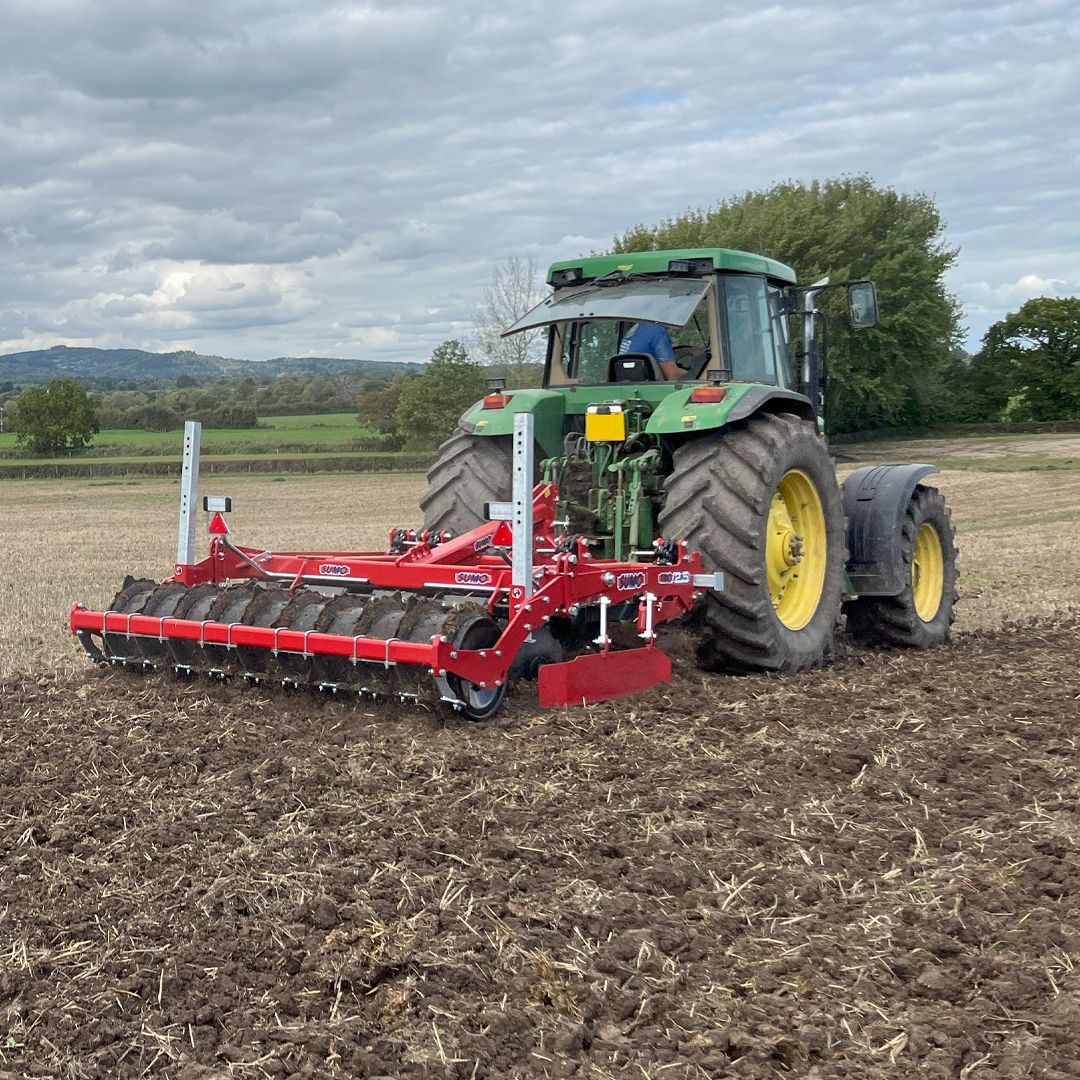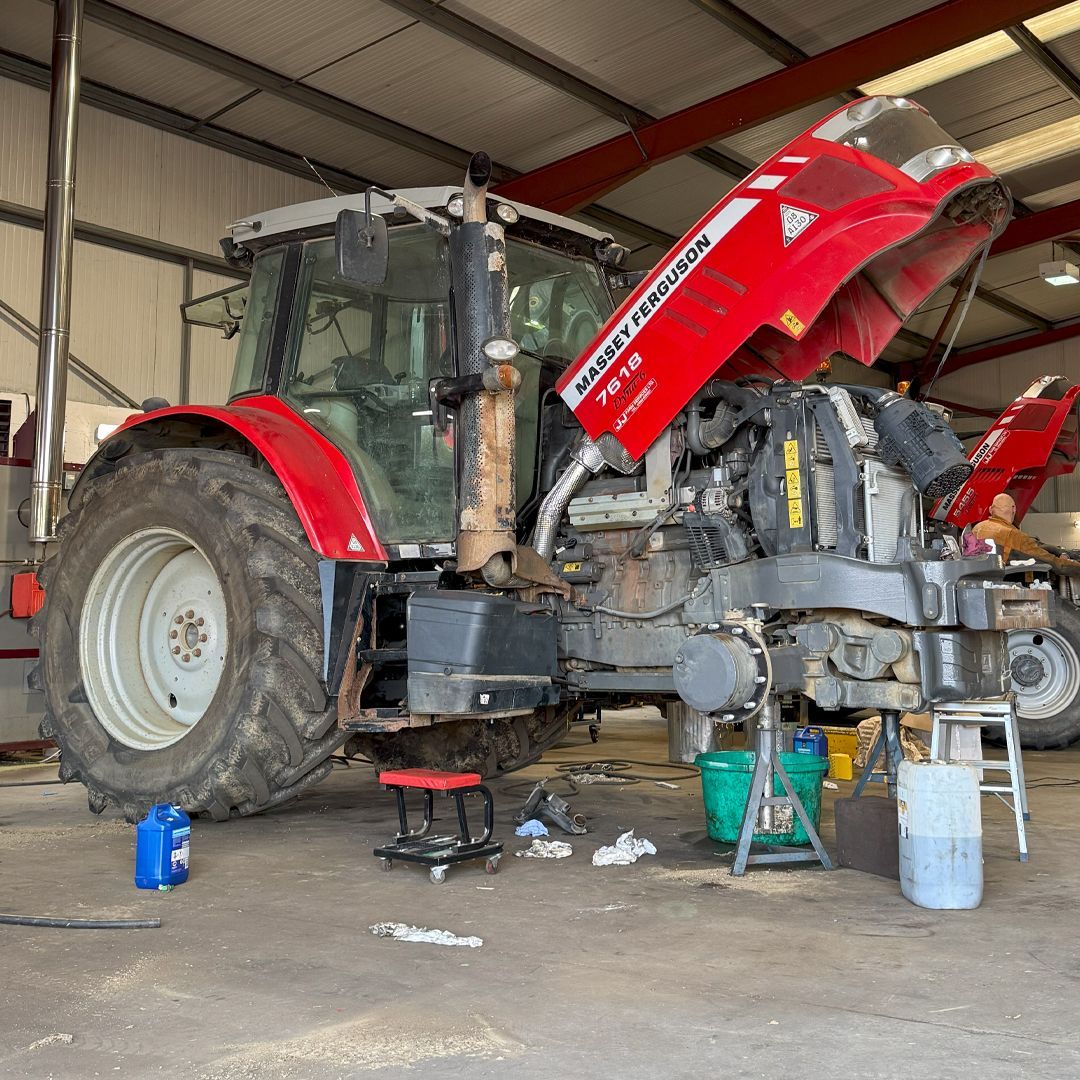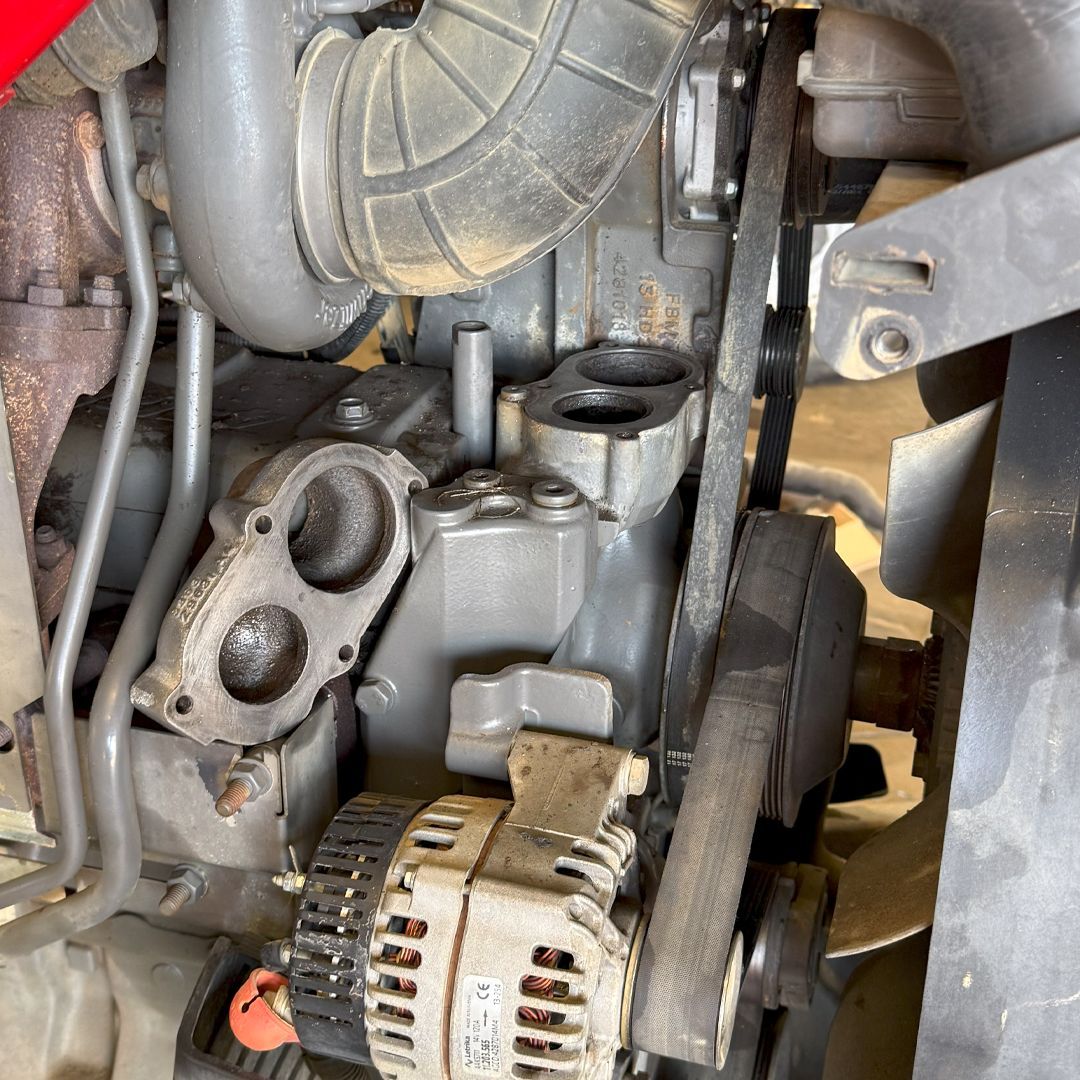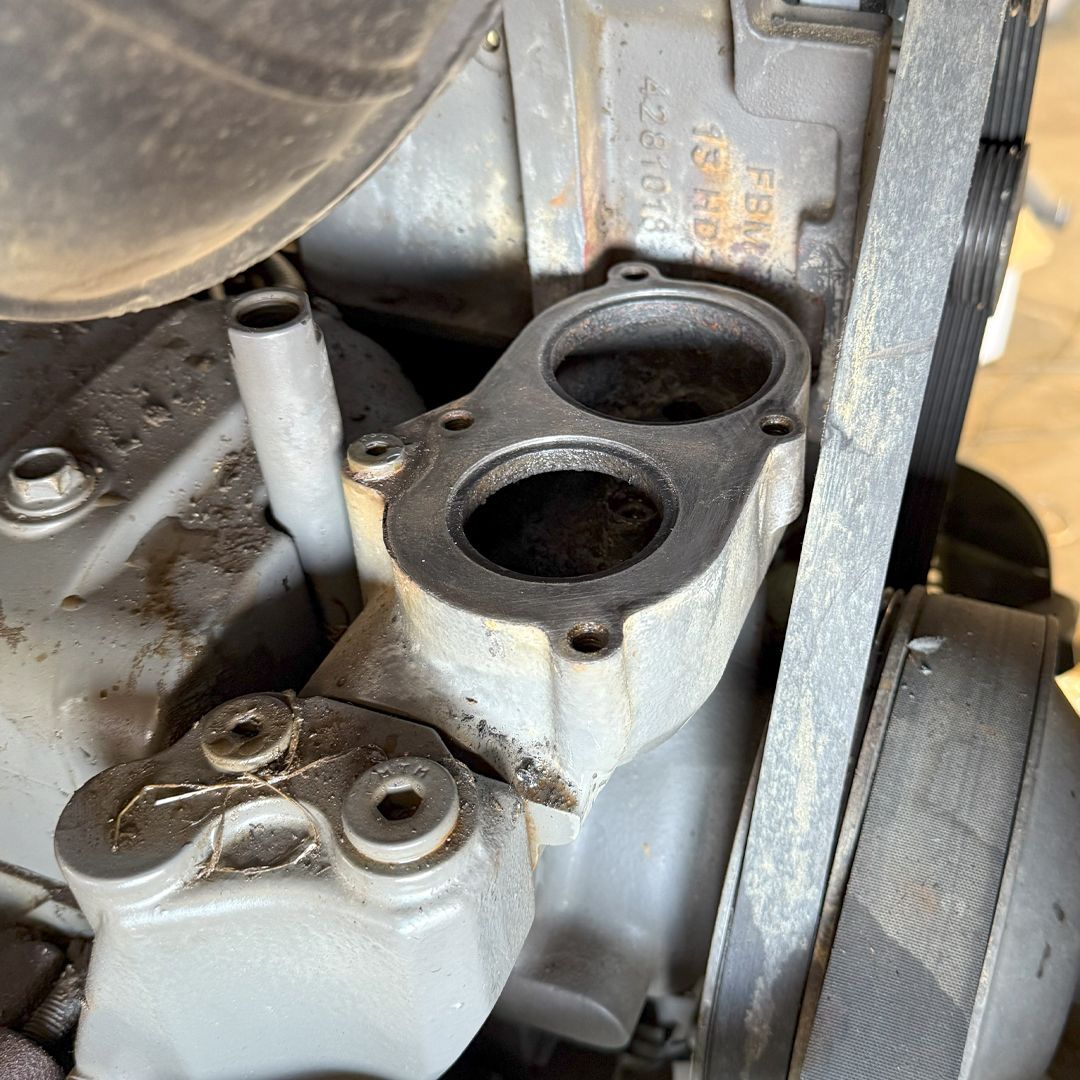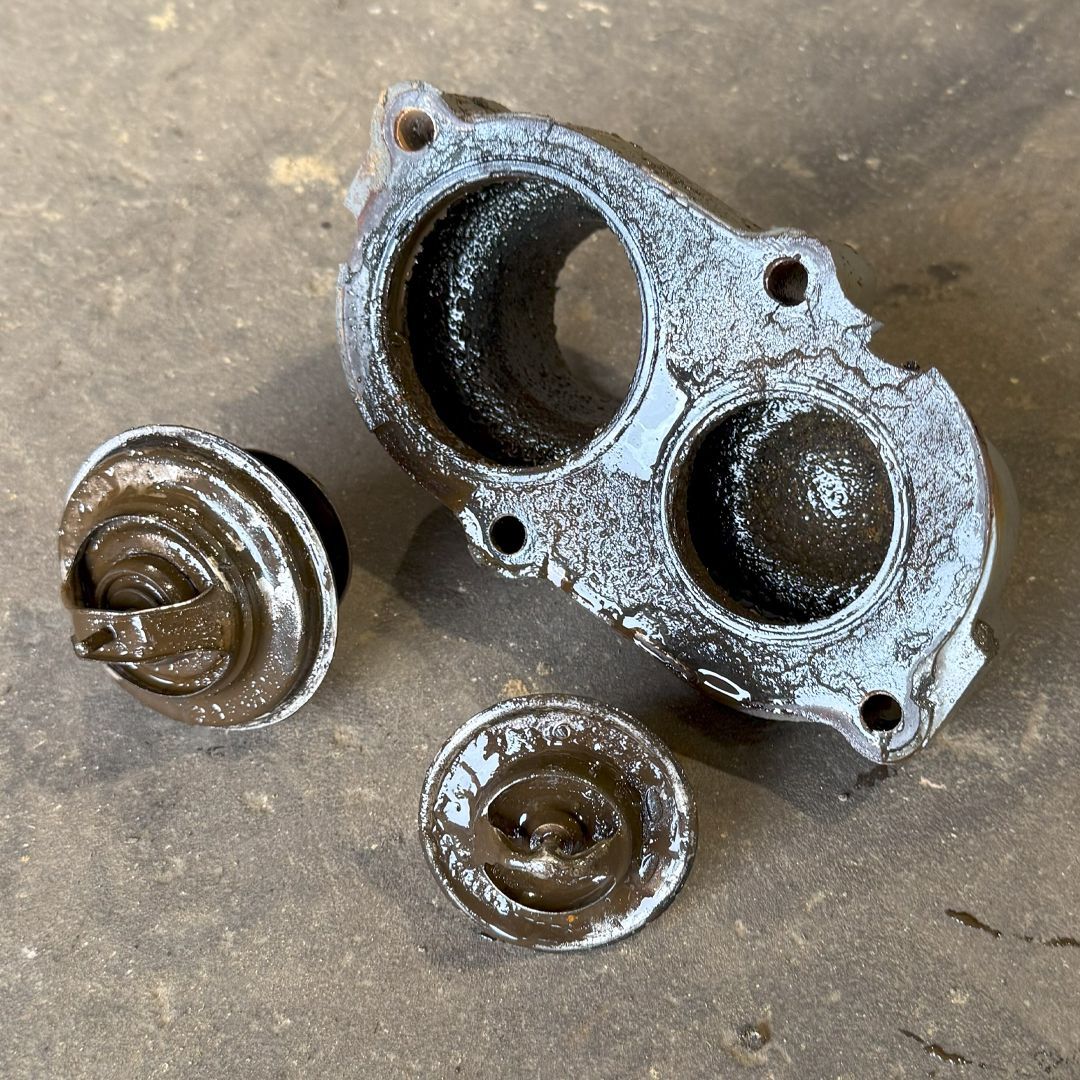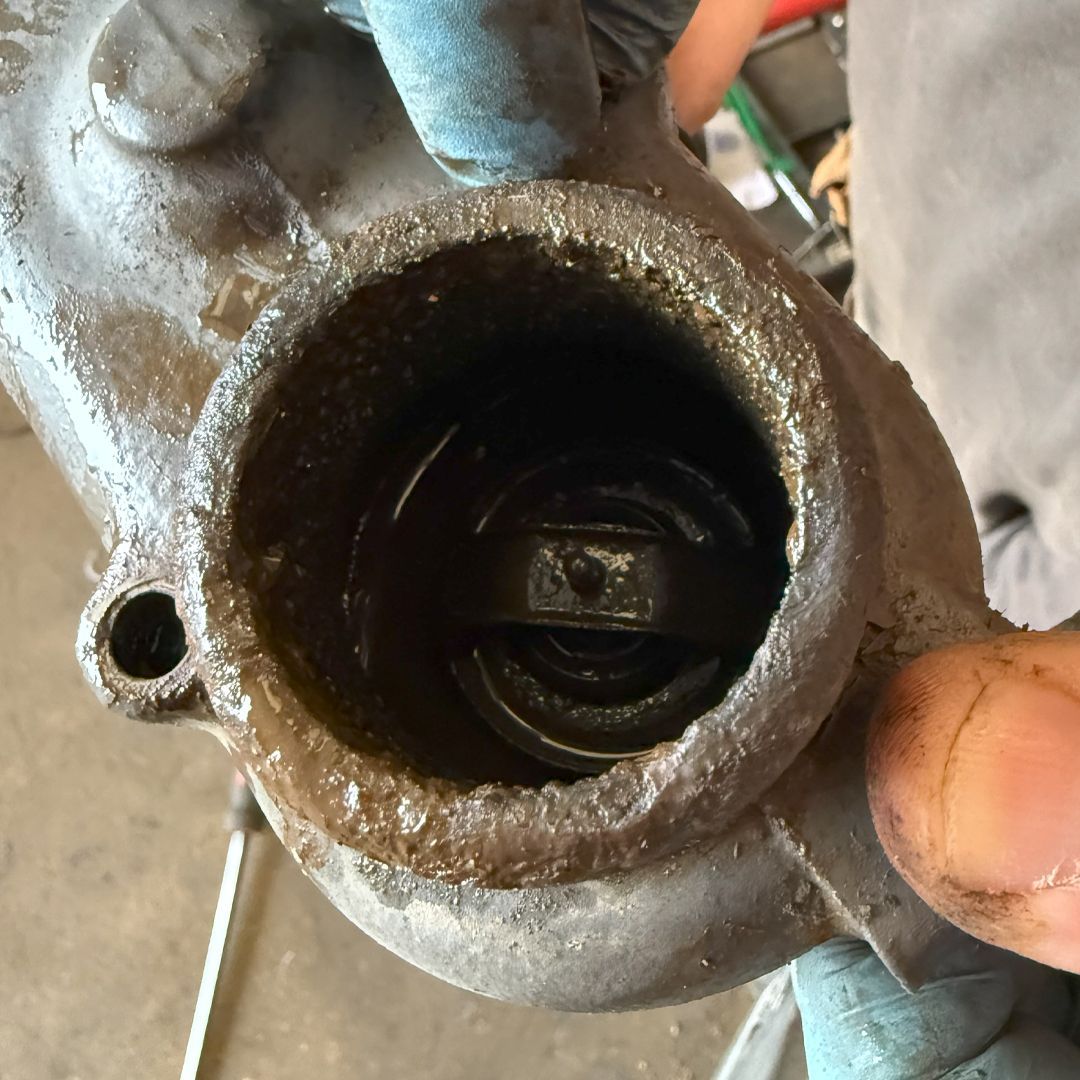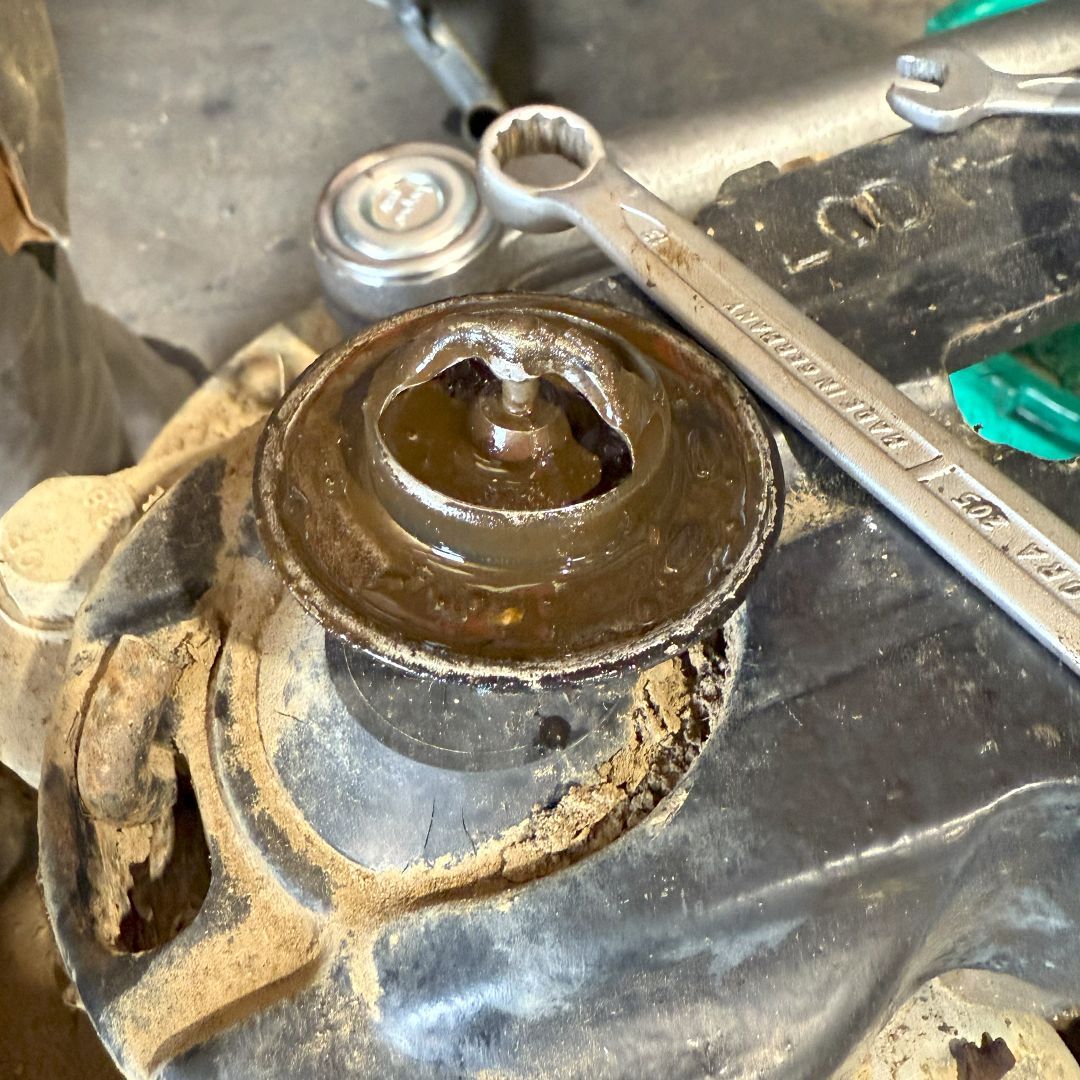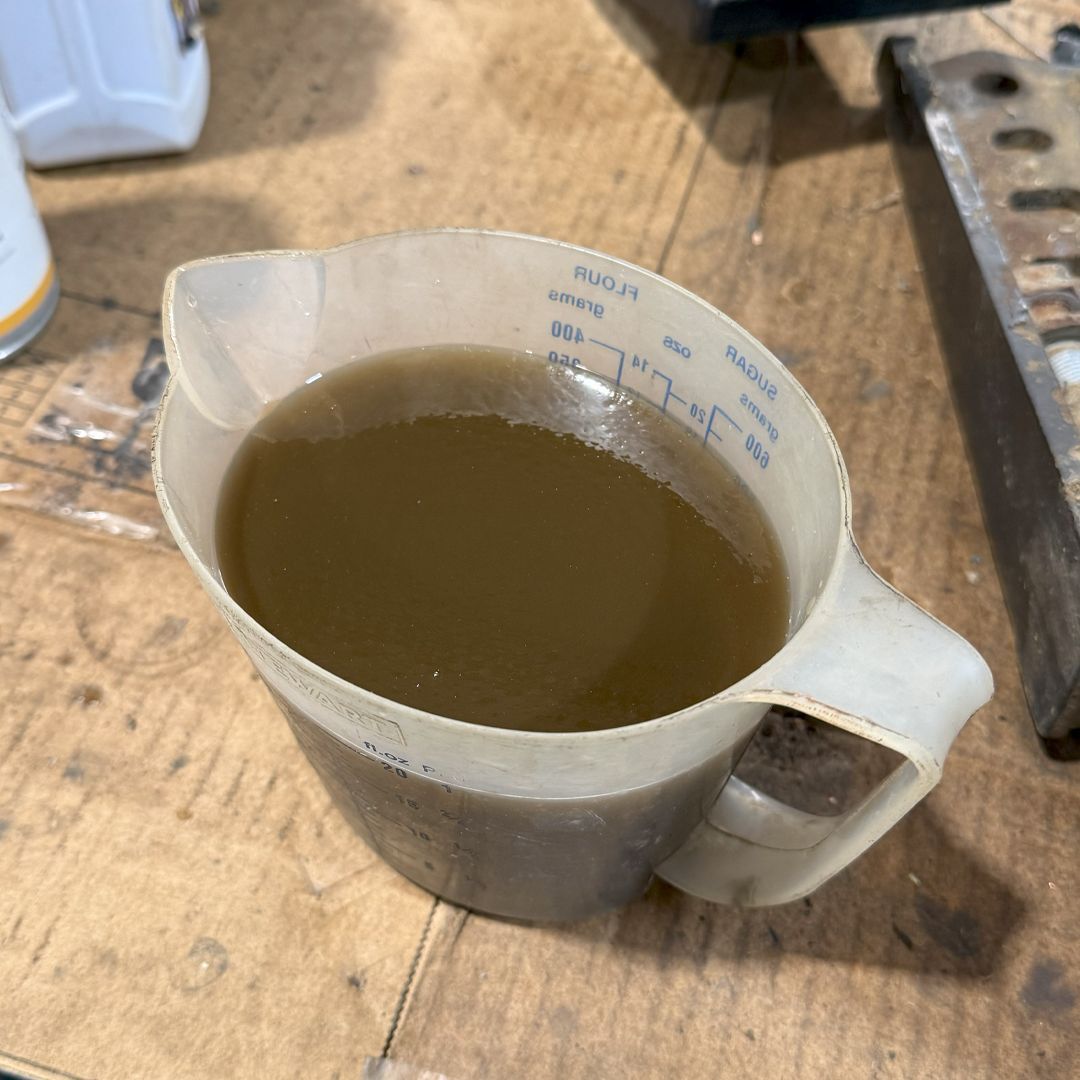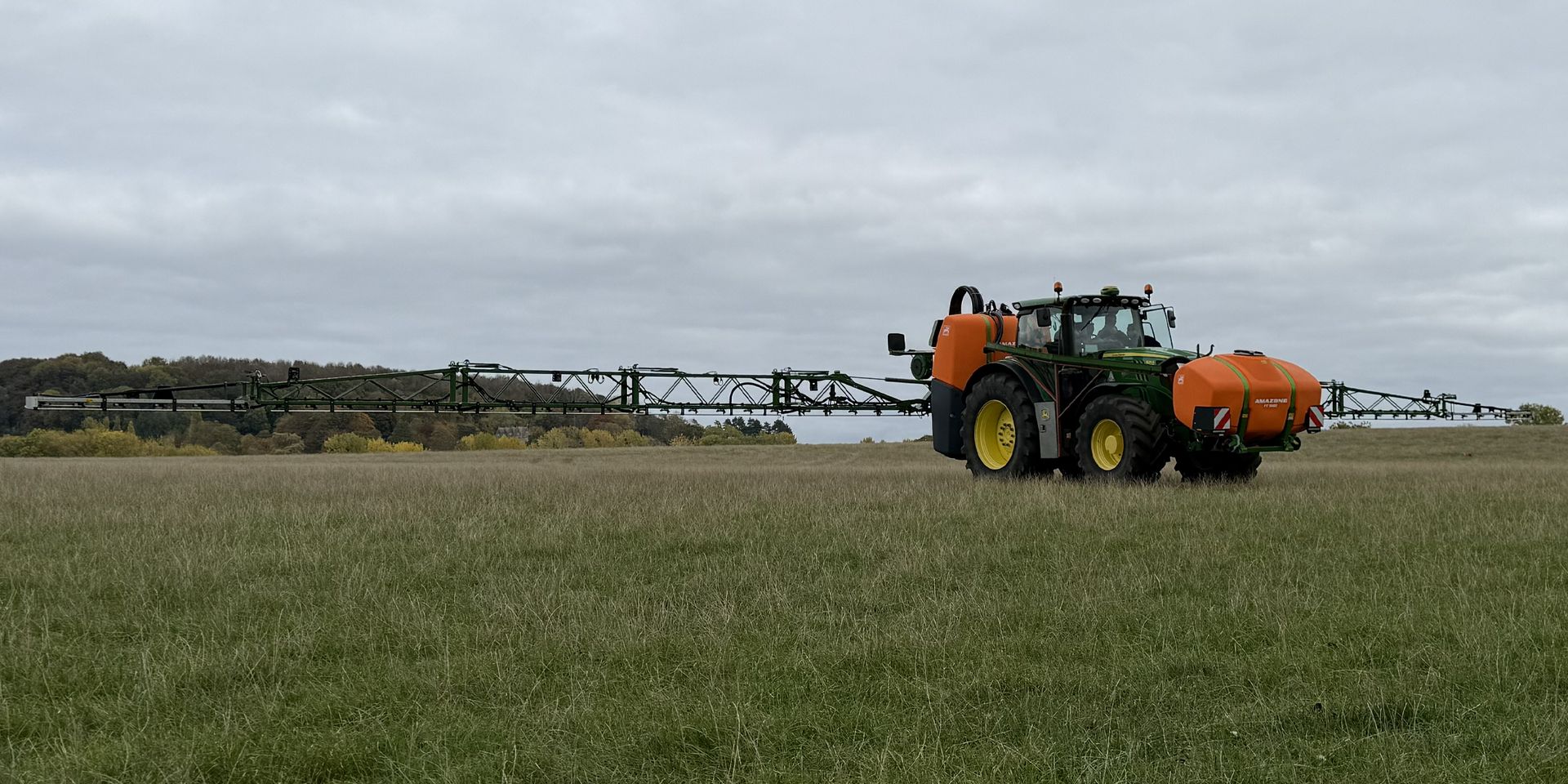Why Coolant System Care Matters
Recently, our workshop welcomed a Massey Ferguson 7618 for a scheduled transmission repair and service. What started as a routine job soon highlighted the importance of preventive maintenance – and why small issues left unchecked can lead to costly downtime.
The Service & What We Found
After carrying out the service and running the engine, our technician noticed that the tractor wasn’t reaching its optimal operating temperature. Instead, it was running cold – a clear sign that something wasn’t right.
The most likely cause? Faulty Thermostats.
To confirm, we removed the thermostat housing and found the root of the problem: a significant build-up of sludge in the cooling system.
Why Coolant Maintenance Matters
Sludge in a coolant system forms when coolant isn’t regularly changed or maintained properly. Over time, it can:
- Restrict coolant flow
- Prevent the engine from reaching normal operating temperature
- Lead to overheating or further component damage
In this case, the thermostats had failed and stuck open, preventing the engine from running as it should. While the Massey Ferguson 7600 series are reliable workhorses, even the best machines need regular coolant checks to stay in top condition.
The Outcome
With replacement parts fitted and the system flushed, the tractor was soon repaired and back to work. Thanks to catching the issue during a service, downtime was limited to just a couple of days – far less than the costly delays that can come from ignoring coolant maintenance.
The Takeaway
This repair is a great reminder that preventive maintenance is always cheaper than downtime. Regular servicing and coolant system checks not only keep tractors running efficiently, they also prevent small problems from becoming big ones.
More latest news…

